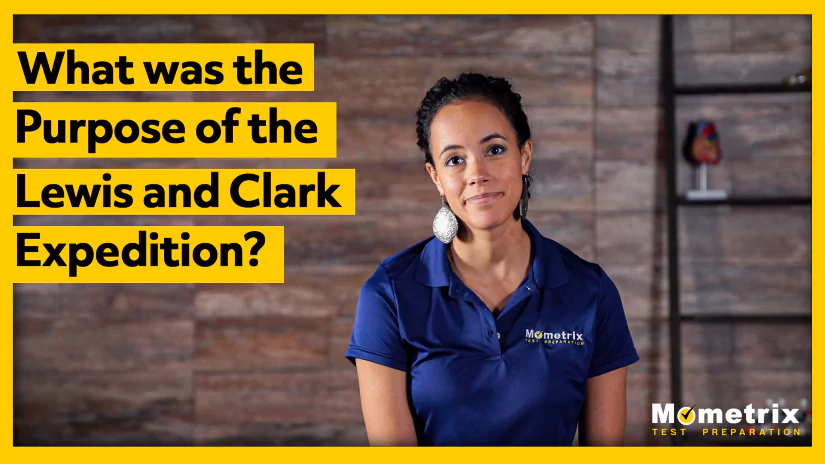
Lewis and Clark. There is one word that usually comes to mind when you hear those names.
Explorers.
Over a two-year period, Captain Meriwether Lewis and his close friend, second lieutenant William Clark, embarked on an expedition to map America’s uncharted territory. I’m going to tell the tale of how the expedition began, who helped the duo during their travels, and the outcome of their expedition.
The Louisiana Purchase
In 1803, President Thomas Jefferson engineered the Louisiana Purchase. France laid claim to the territories but had a problem. The French failed to take control of a rebellion in one of its colonies in present-day Haiti. The military leader and future emperor, Napoleon Bonaparte, was worried about war with England and needed money to fund his military.
In the largest land purchase in American history, the United States obtained 827,000 square miles of territory stretching from the Mississippi River to the Rocky Mountains. The country’s size doubled overnight. In exchange, France received $15 million. Today, that’s about $334 million, which, for all of the land, would still be a bargain.
Preparation and Departure
But now that the United States had all of this property, it needed to explore the region. In the same year the purchase took place, Jefferson won congressional approval to create the Corps of Discovery, which would map the uncharted land. Jefferson selected his secretary, Meriwether Lewis, to lead the expedition.
Throughout 1803 and 1804, Lewis and Clark gathered supplies, recruited volunteers, and trained men at Camp DuBois outside of St. Louis. The expedition began on May 14, 1804, snaking its way along the Missouri River at an average of 15 miles per day.
Shortly into the journey, tragedy struck. One of the volunteers, Sergeant Charles Floyd, a 22-year-old corps member, died, apparently of appendicitis. He would be the only member of the corps to die during the expedition.
Native American Interactions
Along the way, the corps came into contact with at least a dozen Indian tribes, which was part of their charge. President Jefferson wanted a record of the tribes living in the new territory. In preparation, Lewis had collected items he could barter with the Native Americans.
The natives who knew the land proved to be a great help. Some helped the group understand the geography and even provided food. Historians believe the Nez Perce tribe may have saved the expedition members during the winter of 1804 and 1805. The corps, short on food and nearly starving, received fish, berries, and buffalo meat from the Nez Perce.
But there were also conflicts. The Teton Sioux tried to demand a toll so the expedition’s boats could cross, but they were outgunned and backed down. Another confrontation, this time over a perceived slight while presenting gifts, nearly started a battle before the Native Americans backed down. In the one violent conflict of the expedition, the Corp killed two Blackfeet warriors from the Pikani Nation who tried to steal rifles and horses.
But by in large, Native Americans and expedition members got along well and avoided hostilities.
Sacagawea
One of the more notable events involved an Indian woman named Sacagawea. A member of the Shoshone tribe, she was kidnapped by the rival Hidatsa in 1800 when she was about 12 years old. A few years later, she became the property of Toussaint Charbonneau, a French-Canadian fur trader who lived among the Indians.
Lewis and Clark reached the settlement of the Hidatsa and Mandan, an affiliated tribe. Upon arrival in 1804, Lewis and Clark met Sacagawea and Charbonneau and immediately recognized their value. Sacagawea spoke Shoshone and Hidatsa, and Charbonneau spoke French and Hidatsa. Their contributions would prove invaluable.
Sacagawea provided much-needed translation services. She was able to identify edible roots, plants, and berries, and herbs that could be used as medicine.
Crossing the Continental Divide
On April 7, 1805, the expedition split. Some of the crew headed back to St. Louis, their keelboat stocked with maps and reports detailing their early findings. The remainder of the party pushed further west, crossing Montana and the Continental Divide via the Lemhi Pass, a two-mile pass in the Beaverhead Mountains on the present-day Montana-Idaho border.
This was the most arduous part of the journey. Freezing temperatures and bad weather resulted in the expedition members suffering from frostbite, hunger, and exhaustion. Still, the party pushed further west until they reached the Pacific Ocean in November 1805, seven months after they began their push west. With winter approaching, the group built a camp, Fort Clatsop, in what is present-day Astoria, Oregon, for two reasons. First, the group needed shelter, but Lewis and Clark wanted to establish an American presence west.
The Return Journey
The expedition began its trip home on March 23, 1806. By June, the snow melted enough so the party could cross the mountains to the Missouri River Basin. The group arrived back in St. Louis on September 23, 1806, and Lewis and Clark met with President Jefferson later that year.
The expedition lasted two years, four months, and 10 days. The corps traveled more than 7,000 miles round trip. Throughout the trek, 59 people would participate, though only 33 made the trip from North Dakota to the Pacific Ocean. The expedition surveyed the Louisiana Territory, produced maps and geographical information, identified hundreds of animal specimens and botanical samples, and peacefully interacted with dozens of indigenous tribes.
Thanks for watching and happy studying!

